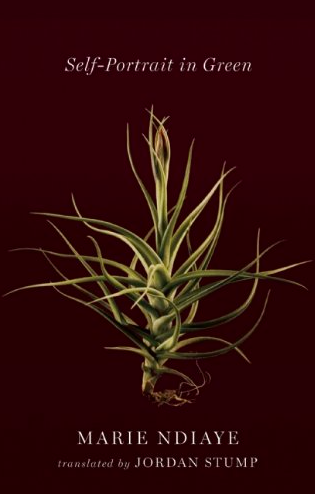Photo Courtesy of Two Lines Press
A worthwhile read on the topic of self-discovery
Lyana Shaharizan, Senior Staff Writer
Marie NDiaye is a French novelist who is known to produce niche and non-cliché stories. She has won quite a few awards and honours, including the Prix Femina in 2001 and Prix Goncourt, and was shortlisted for the Man Booker Prize in 2016 and Best Translated Book Award in 2017. Self-Portrait in Green is an enthralling exploration of identity, family dynamics, and the complexities of self-discovery. Reading the book feels like a trip into a surreal yet ordinary world that makes us question our own sanity. It does sound a bit like a paradox, but the author did a great job weaving a narrative tapestry that combines the uncanny with the normal, inviting readers into a world where the boundaries between reality and imagination blur.
The novel follows the life of an unnamed narrator as she grapples with her sense of self and belonging. From the first page, NDiaye’s prose is both lyrical and evocative, painting vivid images of the narrator’s experiences and emotions. The writing of the book is somewhat reminiscent of Rick Riordan’s Percy Jackson series, where the narrator tells us the story and the inner monologues of the characters, but with a more serious undertone. For the reader, this creates the illusion of being in the same place at the same time as the narrator. Hence, we resonate with them and relate to their situation more easily.
The use of the colour green, which saturates the narrative, becomes a symbol of negative thoughts, emotions, and physical experiences. The phrase “woman in green” is repeated a million times throughout the novel. The narrator has a peculiar way of describing people, especially women. She is very observant of others’ appearances. However, as we get closer to the ending, she often gets confused by her own memory, with her observations and experiences seeming only to exist in her imagination. Moreover, the narrator’s feelings toward the colour are very strong and strange. She tries subtly to tell us that the colour feels like a bad omen, since it is only mentioned after a tragedy or an inconvenience happens. Even so, by the end of the book, the narrator uses the colour green to symbolize freedom and sexual vivacity, as well as resilience and the power of youth.
One of the novel’s strengths lies in its nuanced exploration of identity; the book does not directly address the themes, problems, and issues that the narrator has. Instead, we must read between the lines and visualize the scenes, so we fathom the underlying meaning and reasons behind everything that occurs to her. We witness the challenges of navigating a world that often imposes rigid definitions of identity through the eyes of the narrator. This thought-provoking novel prompts the readers to question societal expectations and reflect on the fluid nature of identity, challenging preconceived notions of what it means to belong in an understated way. To be frank, I rarely enjoy self-discovery books as they come out as too pompous and pretentious to me. Thus, I believe that the book’s subtle way of including the theme would be a bonus point for people who feel the same way as I do.
If you think that the novel might be a mundane story as the theme seems to be too didactic, you are wrong. I had read the book without reading the synopsis or reviews beforehand, so I had zero clue what it was about. At the beginning, I thought that this novel was about some creepy and disturbing myth from a small village in southwest France. The setting is particularly eerie — it would definitely give you goosebumps and have you looking behind your back occasionally to make sure there is nothing watching you from afar.
To wrap it all up, Self-Portrait in Green is a thought-provoking and beautifully written exploration of identity, family, and the journey to self-discovery as well as self-healing. Marie NDiaye’s immaculate narrative skill and poetic prose make this novel a compelling read that lingers in the mind, inviting readers to reflect on the complex interplay of identity and the kaleidoscope of experiences that shape our sense of self, while providing the uncanny experiences faced by the narrator. The themes of the novel can be unpacked in different ways, and I believe there is much more underlying meaning that I have not realized yet that other readers might have. Try to read this short, one-sitting novel, and together, we can find out the hidden messages in it!




